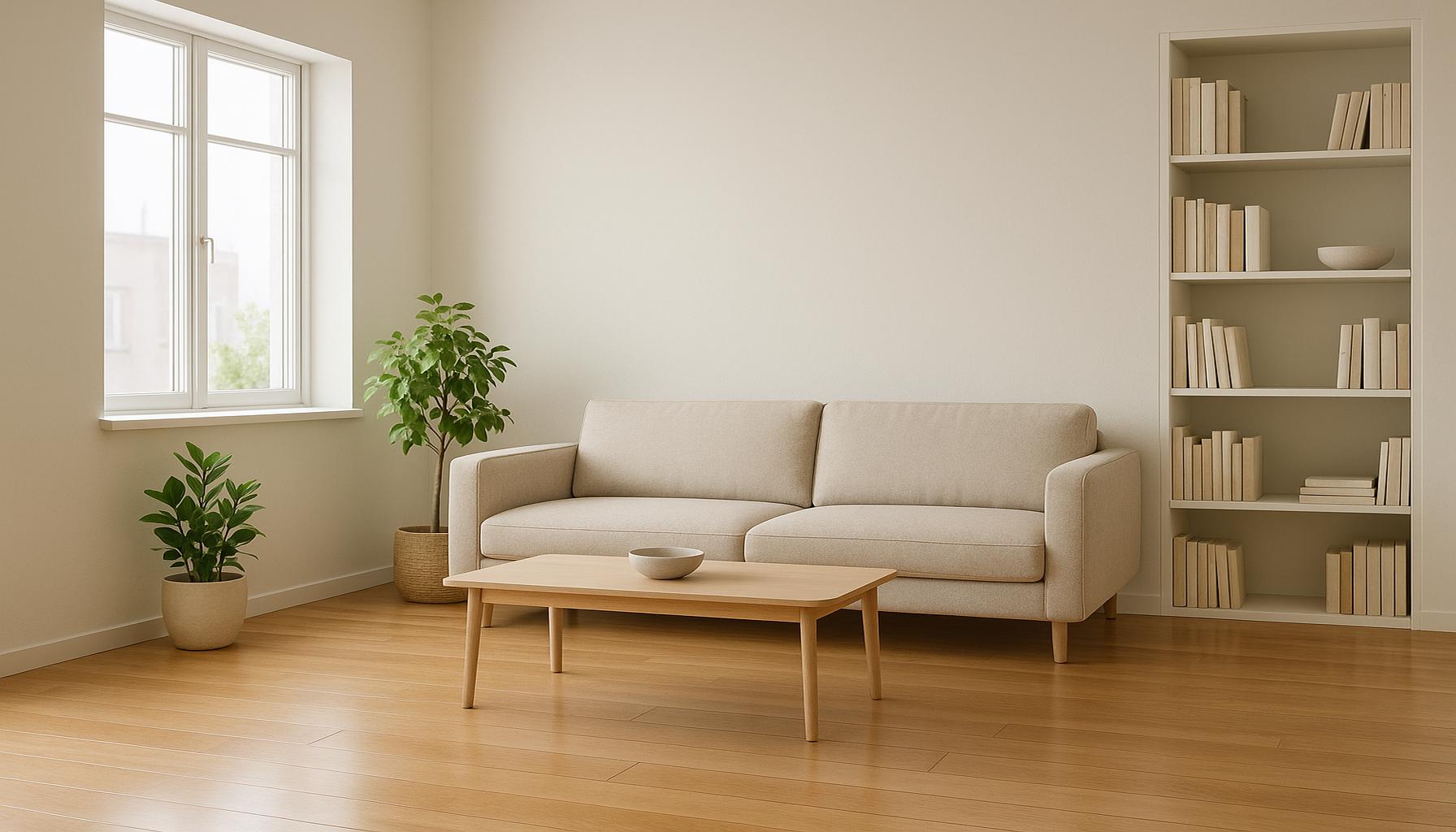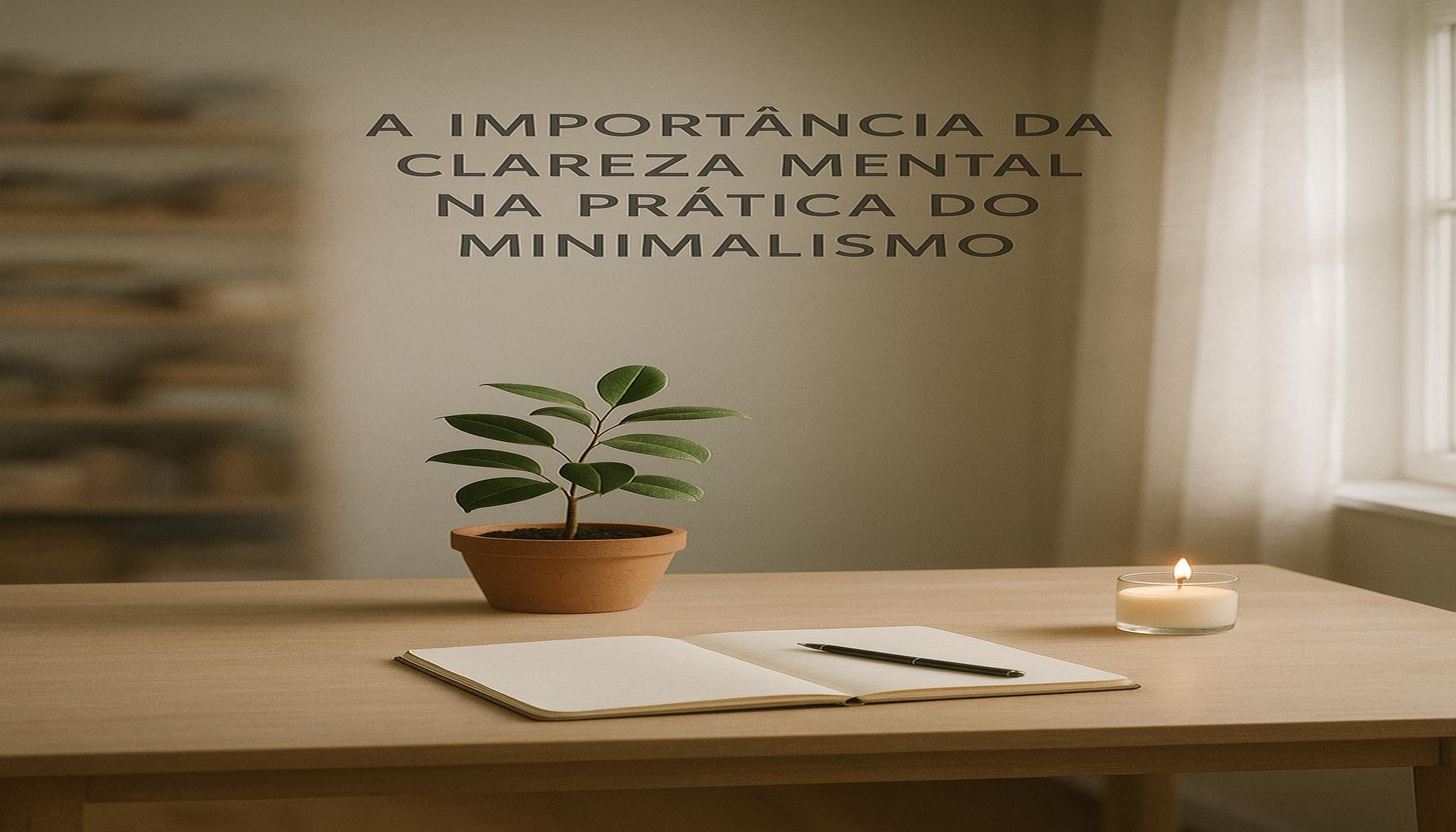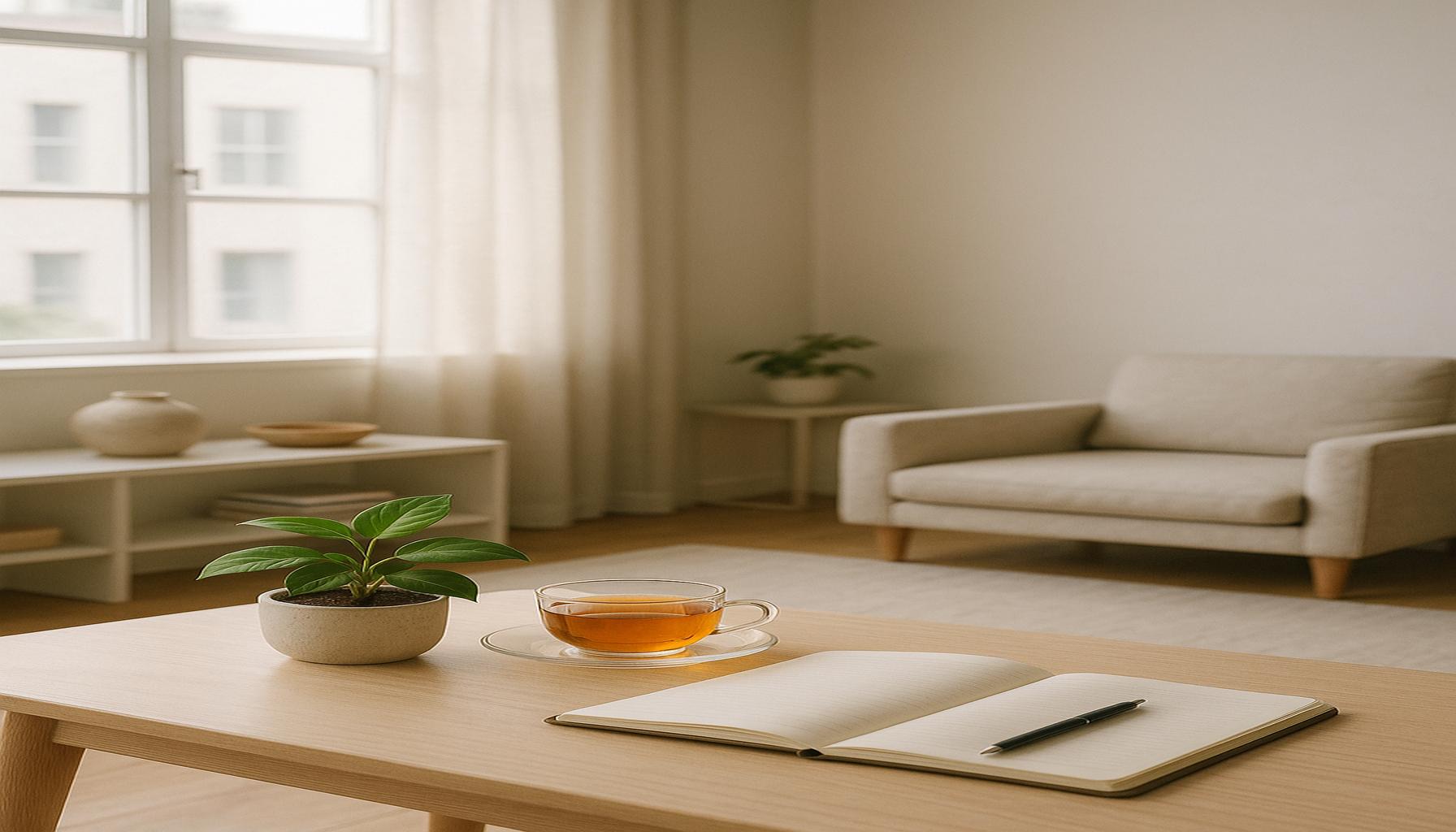Creating Clarity Spaces: Minimalist Organization Tips for Clutter-Free Environments

Embracing Minimalism for a Clutter-Free Life
In our fast-paced world, a clutter-free environment isn’t just a luxury; it’s a necessity. The prevalence of consumer culture leads many individuals to accumulate items that eventually contribute to feelings of overwhelm and anxiety. Decluttering is not merely about aesthetics; it enhances mental clarity, reduces stress, and boosts overall productivity. However, achieving a serene and organized space requires a deliberate and thoughtful approach.
- Understand the Benefits: Minimalism is rooted in the idea of simplicity and intentionality, promoting mental well-being and fostering a peaceful atmosphere. Numerous studies have shown that clutter can negatively impact cognitive function and emotional health. By adopting a minimalist lifestyle, individuals report improved concentration and enhanced creativity.
- Identify Clutter Sources: Recognizing the sources of clutter in your home is a critical step in the decluttering process. Common culprits include impulsive purchases, sentimental items that no longer serve a purpose, and the habit of keeping items ‘just in case.’ By identifying these triggers, you can develop strategies to combat them effectively.
- Create Functional Spaces: A minimalist approach suggests that less is more. Creating spaces that serve specific purposes allows individuals to utilize their living areas more efficiently. For example, converting a cluttered spare room into a functional home office can make work-from-home setups more productive while eliminating the distractions of unnecessary objects.
Transforming your surroundings requires more than just throwing items away; it involves rethinking your relationship with possessions. Implementing minimalist organization tips can streamline your environment and promote functionality.
- Assess Your Needs: Begin by evaluating what items are truly essential to your daily life. Consider a one-in, one-out policy, where for every new item brought into the home, an old one must be discarded. This not only helps in maintaining a clutter-free environment but encourages intentional purchasing.
- Establish a System: Developing an organization system tailored to your lifestyle can make a significant difference. For instance, utilize color-coding for files or using clear, labeled bins for frequently used items. Such systems make it easier to find what you need quickly, reducing frustration and time wasted rummaging through clutter.
- Maintain Your Space: Regularly revisiting your organization habits is crucial to prevent new clutter from accumulating. Setting aside time monthly to re-evaluate your space and adjust as necessary can help maintain that desired tranquility.
As you navigate through the journey of minimalism, consider how small changes can lead to big transformations. Acknowledging that your home is a reflection of your mind can be a powerful motivation to create clarity spaces that enhance both your physical and mental environment. Transform your home into a tranquil sanctuary where every item has a purpose, and enjoy the benefits of a clutter-free life.
DISCOVER MORE: Click here to enhance your productivity
Strategies to Create Clarity Spaces
Creating clarity spaces within your home is an essential aspect of adopting a minimalist lifestyle. It goes beyond merely organizing items; it cultivates an environment that fosters peace and productivity. Here are several strategies that can facilitate this transformation, helping you achieve a clutter-free sanctuary.
- Declutter with Purpose: Start with a specific area, be it a room, closet, or workspace. Remove all items and only return those that serve a functional purpose or evoke joy. This approach, popularized by Marie Kondo, can lead to profound insights about what truly matters to you.
- Maximize Vertical Space: In many homes, horizontal surfaces quickly become hotspots for clutter. To combat this, consider utilizing vertical storage solutions such as wall-mounted shelves or hooks. These can provide effective storage for books, tools, or decorative pieces while keeping surfaces clear and open.
- Implement Multi-Functional Furniture: Investing in furniture that serves multiple purposes can drastically reduce clutter. For instance, a coffee table with built-in storage, a bed with drawers underneath, or an ottoman that doubles as seating and a storage unit can streamline your living space significantly.
As you embark on creating clarity spaces, it’s critical to embrace the mindset of letting go. This often entails discarding items that we may feel emotionally attached to but which no longer contribute positively to our lives. Engaging in an honest evaluation of possessions can lead to a more intentional approach to what we keep.
- Use the 30-Day Rule: If you haven’t used an item in the past 30 days, consider whether it warrants space in your home. This method pushes you to reflect on your habits and helps clear out items that clutter your environment but rarely contribute to your daily routine.
- Organize Digitally: Today’s digital age presents a unique opportunity to minimize physical clutter. Scan important documents and store them digitally, reducing the need for filing cabinets filled with papers. Apps that allow for scanning and organization can significantly reduce both physical and mental clutter.
- Establish Daily Maintenance Routines: Once you have your space organized, it’s important to implement daily habits to keep it that way. Spend just 10 to 15 minutes each day tidying up and returning items to their designated spaces to prevent clutter from piling up again.
By applying these strategies, you’re not just clearing out space; you’re cultivating an atmosphere that supports your minimalist values. A well-organized home not only enhances your physical surroundings but also contributes to a more focused and clear-minded existence. This transformation is about creating clarity spaces—areas that resonate with tranquility and intentionality, promoting overall well-being.
| Category | Advantages |
|---|---|
| Decluttering Techniques | Enhances mental clarity and reduces stress. |
| Sustainable Storage Solutions | Maximizes space while supporting eco-friendly practices. |
In the pursuit of clarity and organization, decluttering techniques play a pivotal role. By systematically removing unnecessary items from your space, you not only make room for what truly matters but also experience a sense of liberation from the mental load that clutter brings. Studies indicate that a tidy environment can improve focus, enhance productivity, and foster a general sense of well-being, making it essential in today’s fast-paced world.Moreover, embracing sustainable storage solutions can significantly contribute to a minimalist mindset. Utilizing multifunctional furniture, utilizing vertical spaces, and opting for eco-conscious materials are just a few ways to maximize every inch of your environment. These practices not only contribute to a clutter-free home but also align with a growing awareness of environmentally friendly choices, making a positive impact on our planet.Exploring these concepts can lead you to a more organized lifestyle, where tranquility and efficiency become the norms rather than the exceptions. Discover innovative ways to incorporate these minimalist organization methods into your daily routine.
LEARN MORE: Click here for insights on simplifying your life
Designing Your Environment for Minimalist Success
Once you’ve embraced strategies to declutter and simplify your belongings, the next step is to design your environment deliberately. A well-thought-out space can enhance your productivity while promoting peace of mind. The following aspects are critical in working toward an organized, minimalist lifestyle.
- Color Palette Matters: The colors you choose for your walls and furnishings can influence mood and clarity. Opt for neutral tones and soft hues that promote tranquility—think whites, endearing pastels, or earthy shades. Such palettes can create a serene backdrop for your belongings, making it easier to highlight the few items that bring you joy, rather than overwhelming the senses with vibrant chaos.
- Furniture Arrangement: The layout of your space plays a significant role in how you experience it. Create open areas that encourage movement and interaction. Avoid placing furniture against every wall, which can make a room feel cramped. Instead, consider floating your furniture, which can create designated spaces within larger areas, thus enhancing both functionality and flow.
- Lighting Variations: Lighting can dramatically influence the ambiance of your clarity spaces. Aim for a mix of natural light and warm artificial lighting to maximize the energy of a room. Use adjustable lamps or smart bulbs that can change color temperatures throughout the day to align with your mood or activity.
As you refine your environment, focus on incorporating elements that align with your minimalist ethos.
- Embrace Natural Elements: Integrating plants into your spaces offers not only aesthetic appeal but also health benefits. Plants improve air quality and can instill a sense of calmness. Easy-to-care-for varieties, like succulents or snake plants, can serve as delicate reminders of nature’s beauty while fitting into your minimalist ideals.
- Curate Your Decor: When it comes to adornments, less is often more. Choose a few significant decorative pieces that tell your story or reflect your values. This could be a piece of art from a local artist or a family heirloom. By thoughtfully selecting these elements, you enhance their importance and set a foundation for clear visual storytelling.
- Create Functional Zones: Good organization isn’t merely about decluttering; it’s also about developing functional zones tailored to specific tasks. For example, an inspiring reading nook can be created with a comfortable chair, a small bookshelf, and excellent lighting. Clearly defined areas promote focus and help maintain the clutter-free ethos that minimalism embodies.
Each element in your home should be there for a purpose, contributing toward the overall goal of cultivating clarity. This approach is echoed in the principles of feng shui, where the arrangement and design of your living spaces can affect your well-being. Exploring such philosophies may provide additional insights into your quest for a clutter-free environment.
Integrating technology can also support your minimalist lifestyle. Smart home devices allow for automation, reducing the need for physical tools and clutter. From smart speakers providing effortless music control to voice-activated lights, these devices create a streamlined experience that aligns with a minimalist approach.
Ultimately, crafting clarity spaces means being intentional about each item and every design choice. By tailoring your environment to be both aesthetically pleasing and functionally efficient, you are set on a path toward a more deliberate, clutter-free lifestyle.
DIVE DEEPER: Click here to discover more about simplifying your life
Conclusion: Embracing a Clutter-Free Lifestyle
In a world increasingly defined by chaos and distraction, creating clarity spaces offers a refreshing antidote. By applying the principles of minimalist organization, individuals can foster environments that prioritize peace, productivity, and well-being. The process begins with decluttering, where every item is evaluated for its necessity and emotional significance. Following this, a thoughtful approach to design—encompassing a calming color palette, intuitive furniture arrangement, and strategic lighting variations—enhances the overall harmony of your environment.
Moreover, integrating natural elements, curating meaningful decor, and establishing functional zones are pivotal in reinforcing the minimalist aesthetic. Each piece should not only serve a purpose but also resonates with your personal narrative, making your space unique and enriching. Incorporating technology wisely can streamline daily tasks, minimizing physical clutter while amplifying efficiency.
Ultimately, the journey toward a clutter-free lifestyle transcends mere aesthetics; it becomes a profound exploration of what truly matters. As you create clarity spaces, you cultivate a sanctuary that invites mindfulness and intentionality into your life. This pivotal shift toward minimalism can redefine how you interact with your surroundings, leading to greater satisfaction and a deeper connection with both your environment and self. Embrace the challenge of simplicity, and discover the transformative power of a clutter-free existence.


